3-Day Exhilarating Exploration Trip to Bhutan
Bhutan
3 days
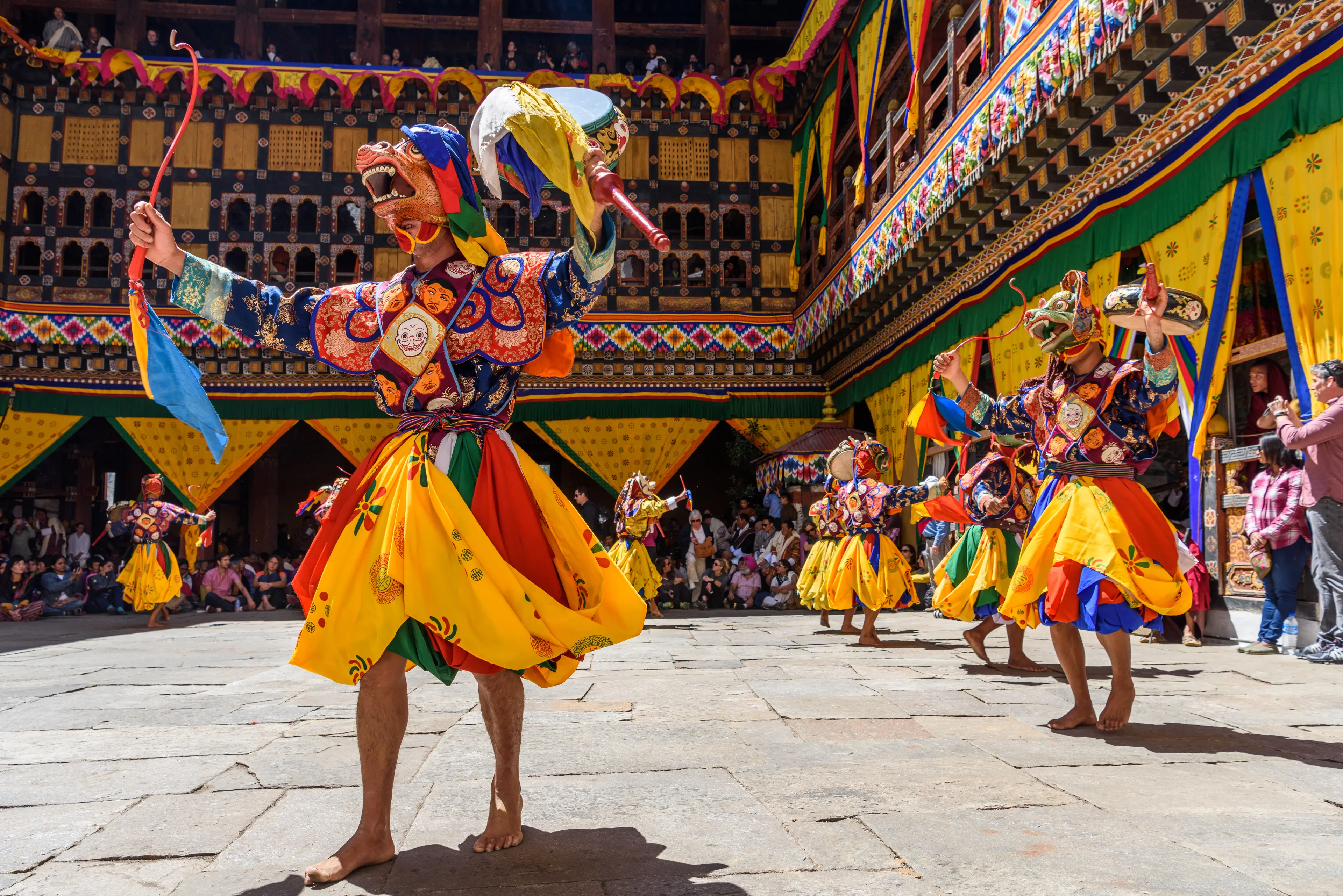
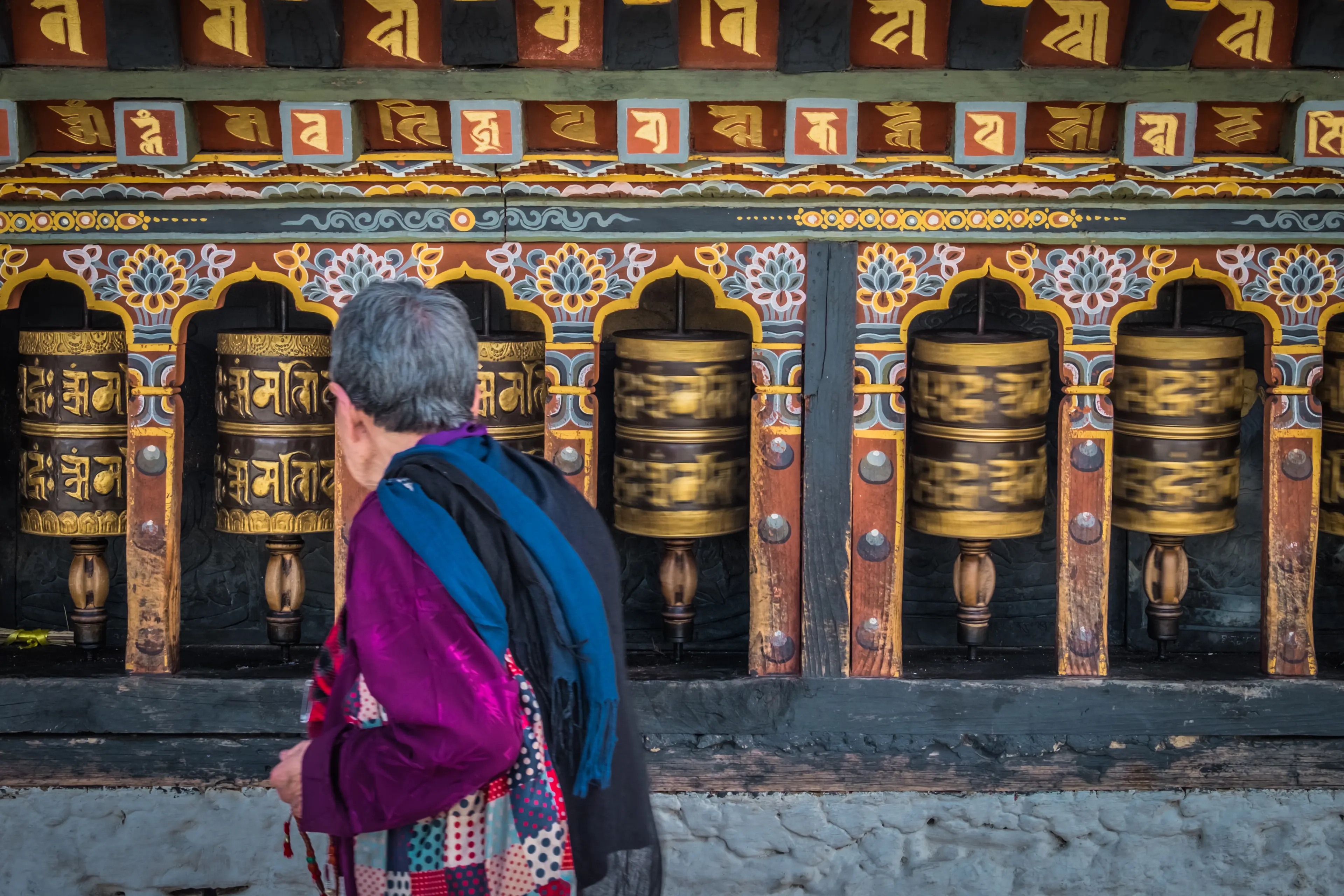

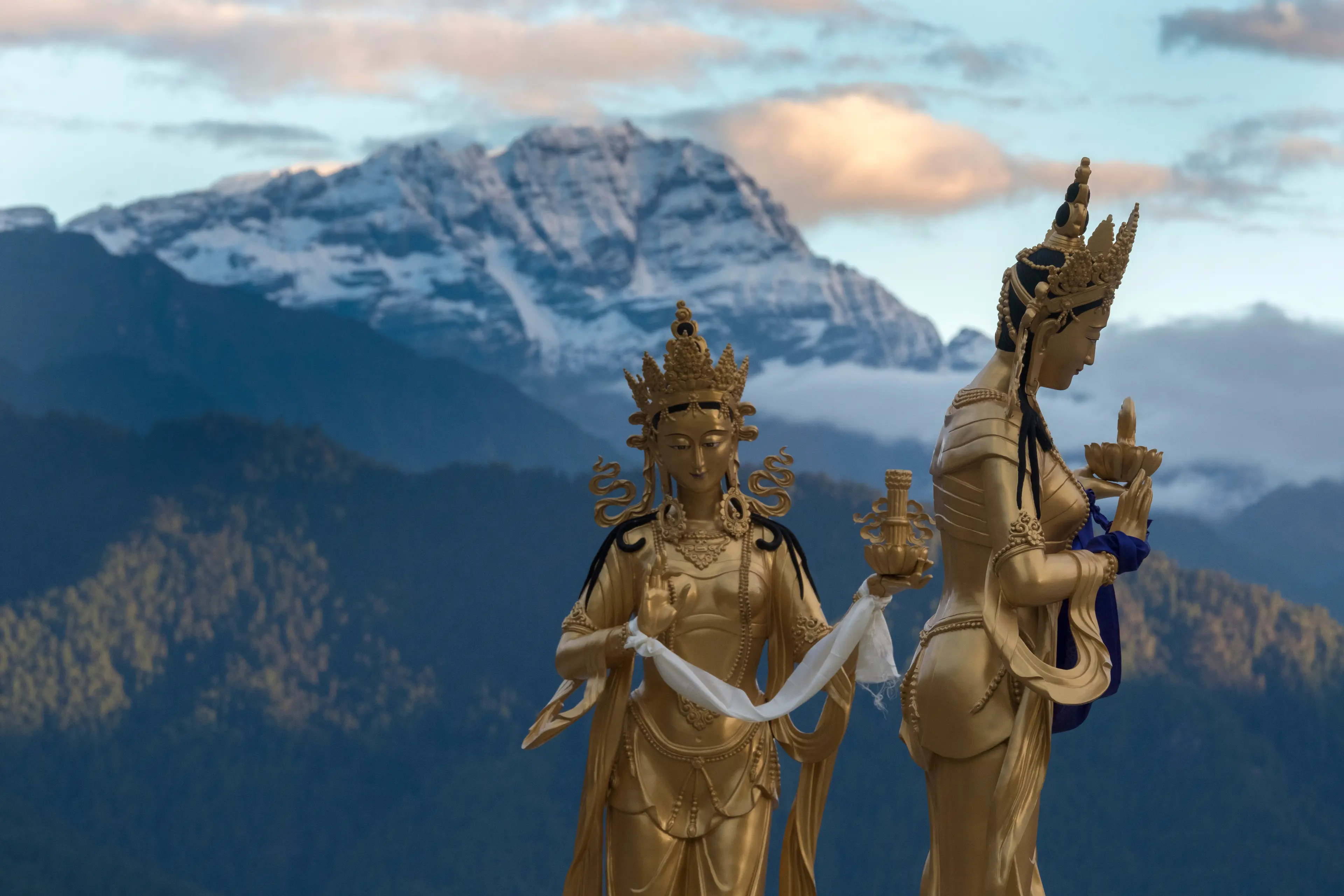
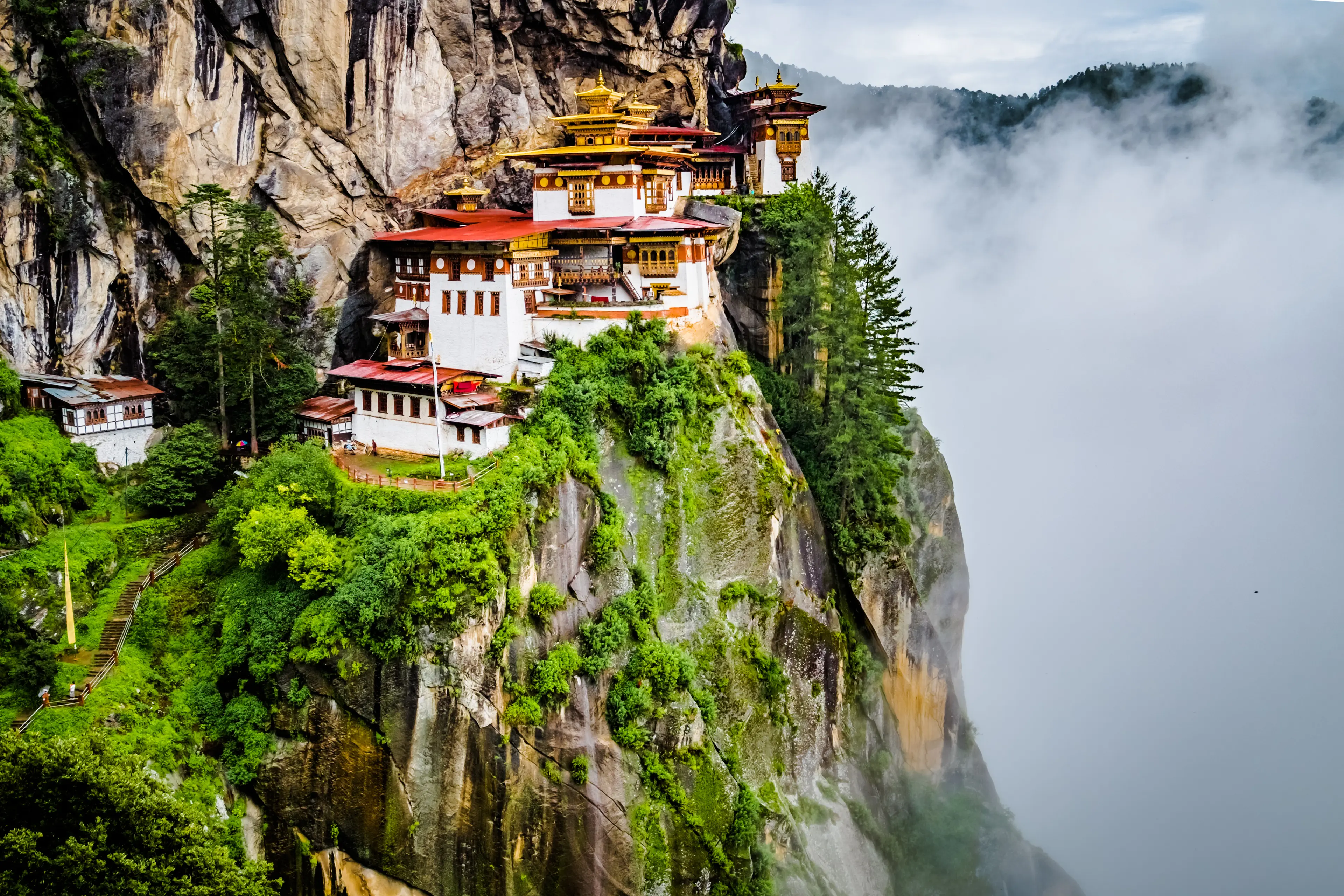
About Bhutan
Bhutan, the "Land of the Thunder Dragon," is a mesmerizing Himalayan kingdom known for its stunning landscapes, rich culture, and spiritual serenity. This untouched paradise offers a unique blend of ancient and modern, where centuries-old fortresses and monasteries coexist with vibrant festivals and a sustainable approach to tourism. Experience the awe-inspiring Tiger's Nest Monastery, perched on a cliff, or the bustling markets of Thimphu, Bhutan's capital. Explore the verdant valleys of Punakha, hike through the pristine forests of Phobjikha, or immerse yourself in the spiritual tranquility of Bumthang. Bhutan's commitment to preserving its traditions and environment makes it a must-visit destination for those seeking a unique, off-the-beaten-path experience.
3-Day Itinerary
Day 2
Discovering the Beauty of Punakha
Morning
Begin your day with a visit to Punakha Dzong, a stunning fortress located at the confluence of two rivers. It is one of the most picturesque ancient fortresses in Bhutan and serves as the administrative center of Punakha district.
Lunch
Have lunch at a local eatery. Try the Bhutanese buckwheat dumplings, known as 'Momo', a popular dish in this region.
Afternoon
Take a scenic hike to Chimi Lhakhang, also known as the Fertility Temple. It is a Buddhist monastery in Punakha District, famous for its fertility blessings.
Dinner
Enjoy a peaceful dinner at a local restaurant. Sample some of the local delicacies like Phaksha Paa (Pork with Red Chilies).
Evening
Experience a traditional cultural performance. Bhutanese folk dances are a feast for the eyes and provide a deep insight into the rich culture and traditions of Bhutan.
Day 3
Unveiling the Mysteries of Paro
Morning
Start your day with a visit to the Tiger's Nest, also known as Paro Taktsang. It is one of the most sacred religious sites in Bhutan, perched on a cliff 900 meters above Paro Valley.
Lunch
Have lunch at a local restaurant. Try the Jasha Maru, a spicy chicken dish, and wash it down with some butter tea.
Afternoon
Visit the National Museum of Bhutan. Housed in a traditional dzong, it showcases Bhutan's cultural heritage, including artifacts from Bhutan's early history, as well as samples of Bhutanese flora and fauna.
Dinner
Enjoy your last dinner in Bhutan at a local restaurant. Don't miss out on trying the local Bhutanese beer.
Evening
Spend your last evening shopping for souvenirs in the local market. Bhutanese handicrafts, textiles, and homemade paper products make for great souvenirs.
Attractions in Itinerary (6)
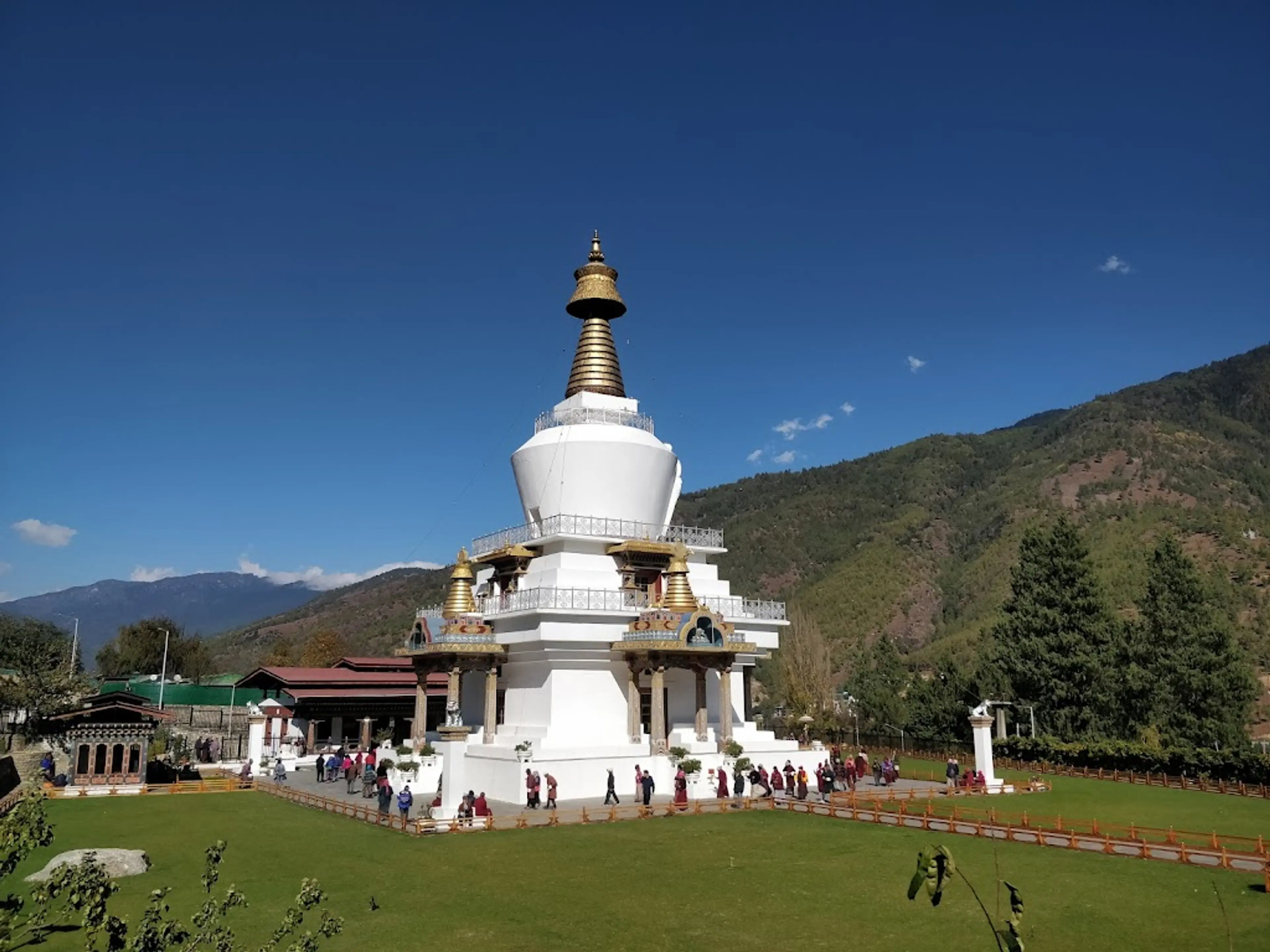
1National Memorial Chorten
A prominent landmark in Thimphu, this stupa was built in 1974 to honor the third King of Bhutan, Jigme Dorji Wangchuck.
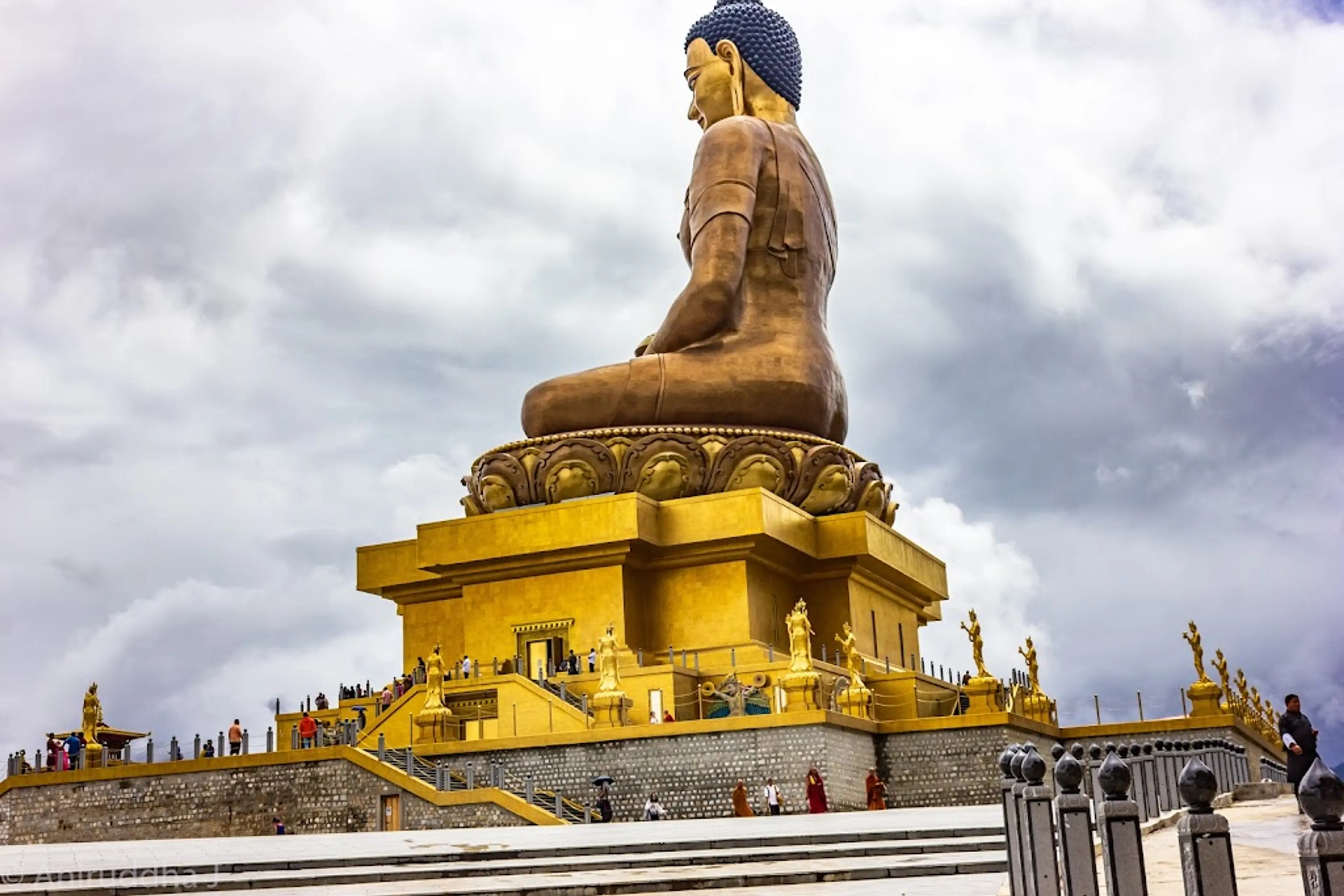
2Buddha Dordenma statue
A 169 feet tall statue of Buddha Dordenma, Vajra Throne Buddha, located atop a hill in Kuenselphodrang Nature Park and overlooking the Southern entrance to Thimphu Valley.

3Punakha Dzong
Built in 1637, it's one of the most picturesque and oldest dzongs in Bhutan, located at the confluence of the Pho Chhu and Mo Chhu rivers.
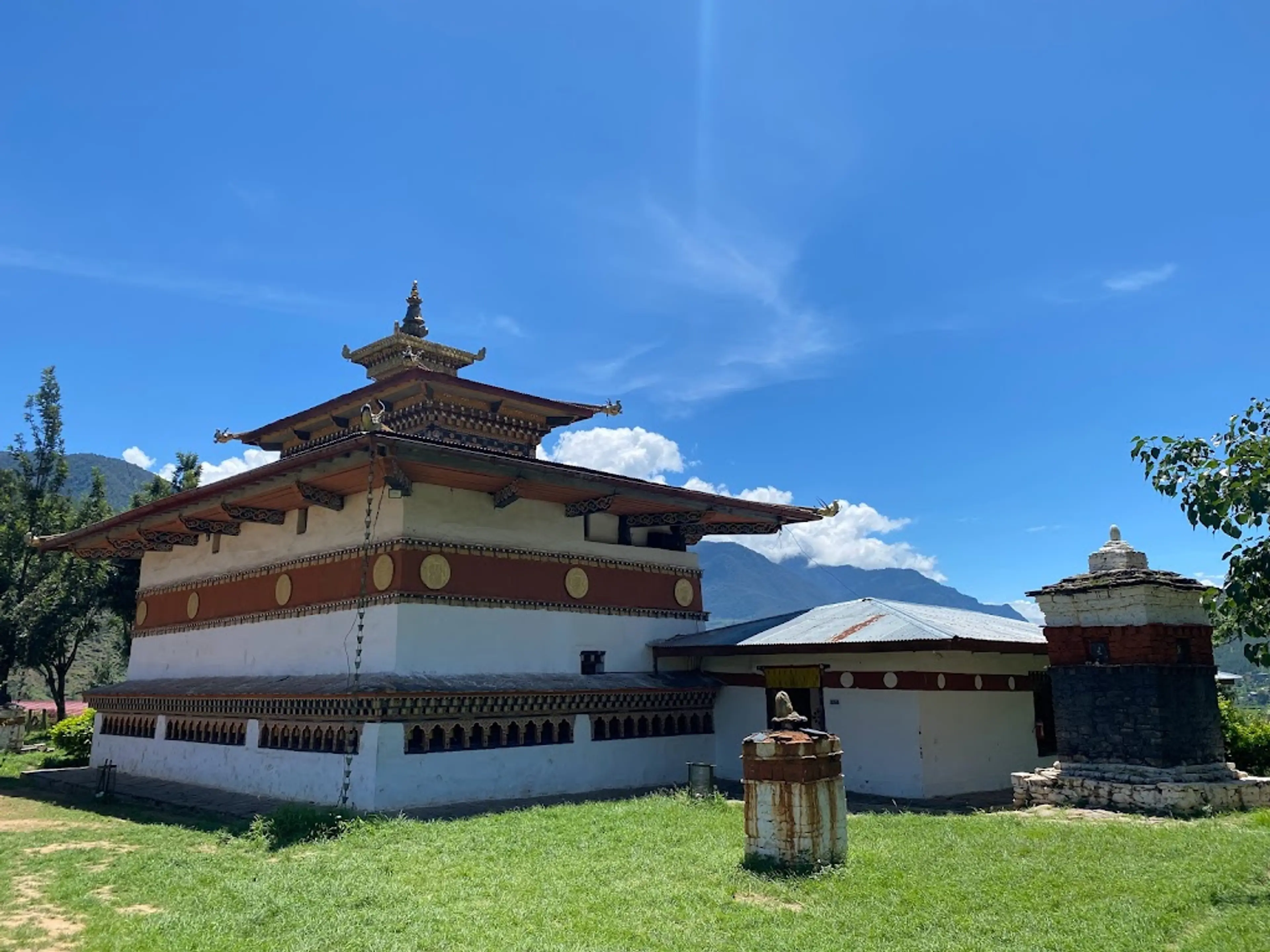
4Chimi Lhakhang
A Buddhist monastery in Punakha, known as the 'Temple of Fertility', visited by childless couples seeking a special blessing to beget children.

5Tiger's Nest
Tiger's Nest, also known as Paro Taktsang, is a prominent Himalayan Buddhist sacred site and temple complex. It is located on the cliffside of the upper Paro valley and is one of the most important symbols of Bhutan.
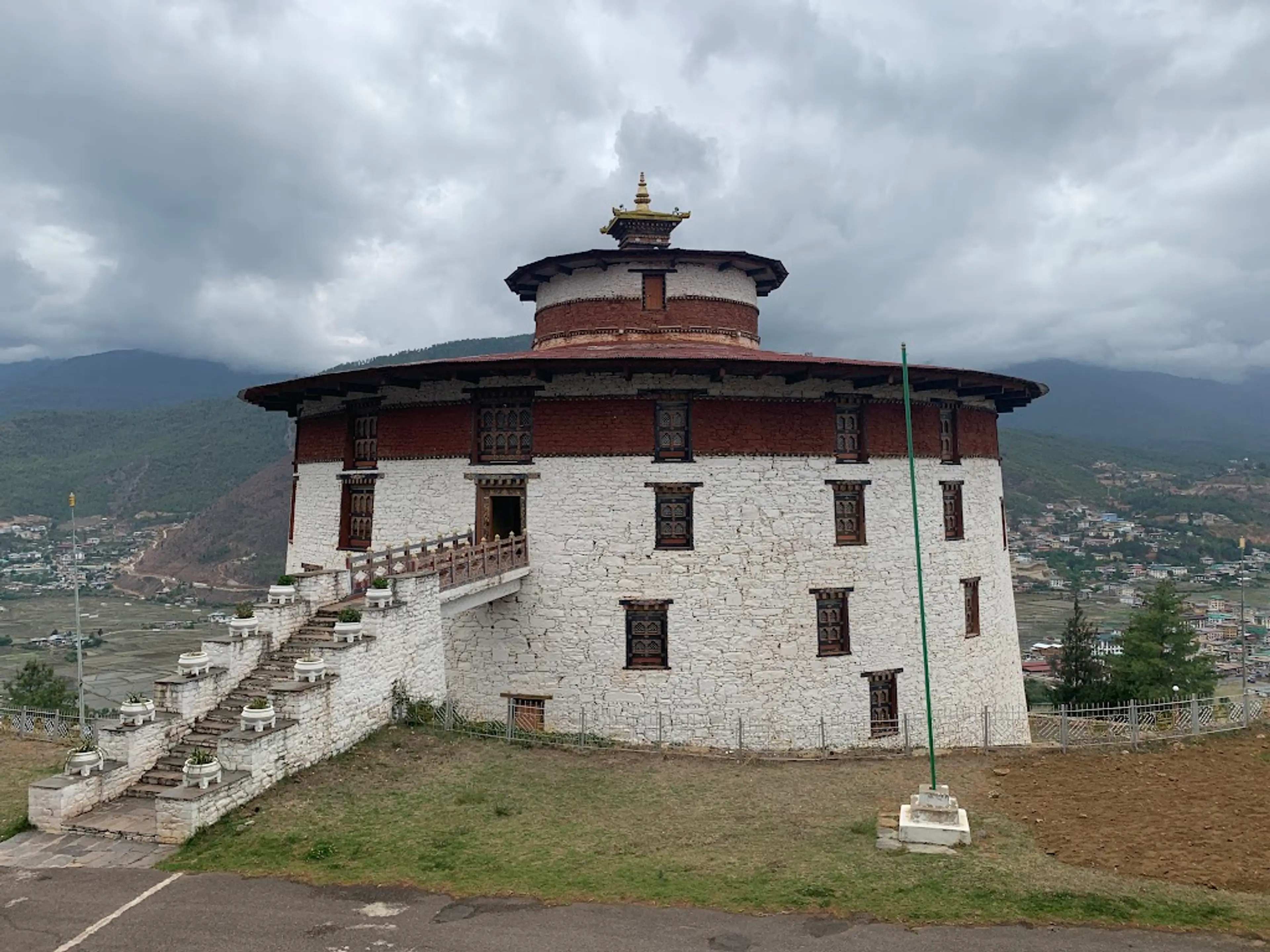
6National Museum of Bhutan
A cultural museum in the town of Paro in western Bhutan. Established in 1968, in the renovated ancient Ta-dzong building, above Rinpung Dzong.
Local Food and Drinks (12)
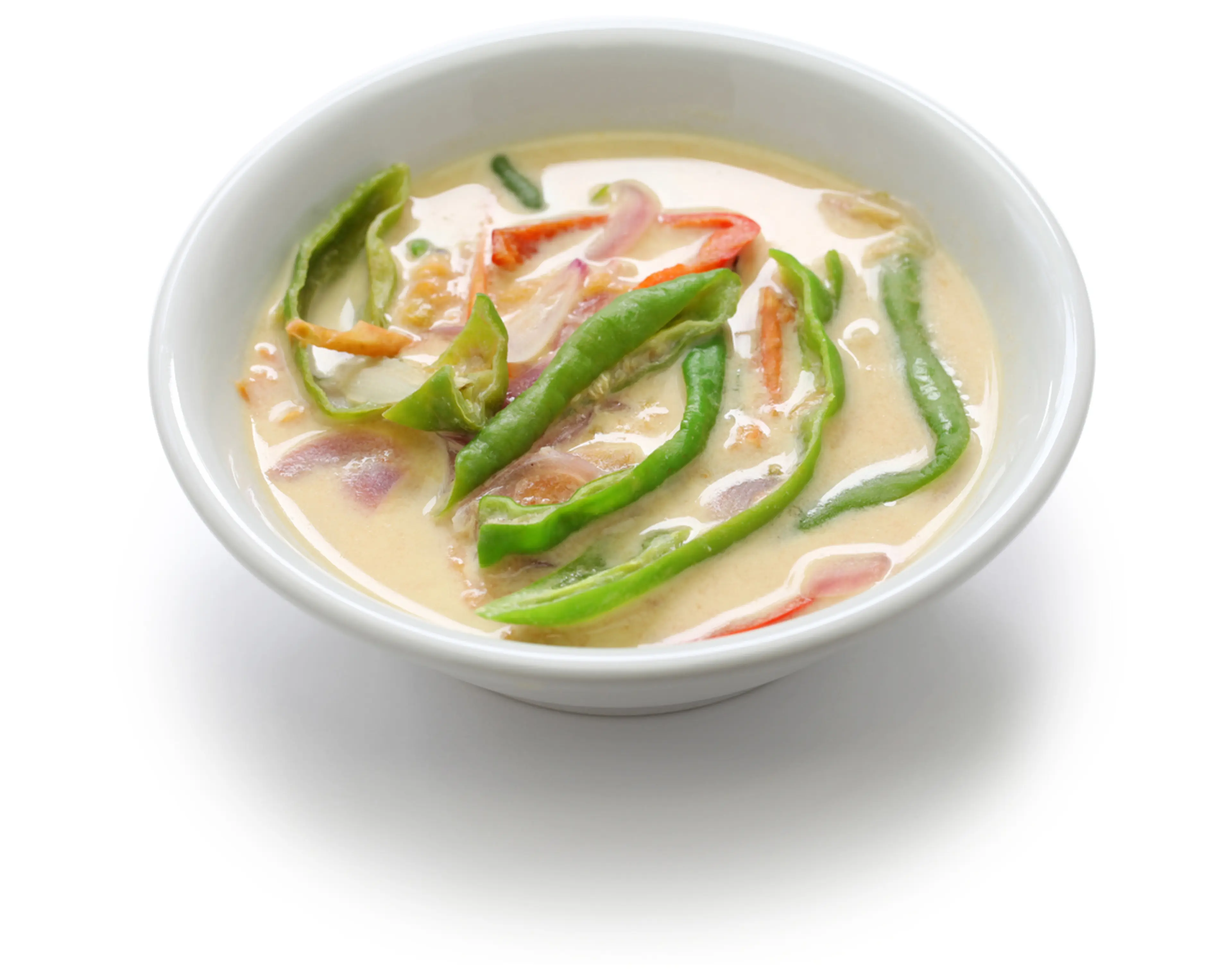
Ema Datshi
Ema Datshi is Bhutan's national dish. It's a spicy mix of chillies and the delicious local cheese known as Datshi. The dish is a staple of nearly every meal and can be found throughout the country.

Jasha Maru
Jasha Maru is a spicy chicken dish, usually served with rice. It is made with diced chicken, tomatoes, garlic, ginger, and chillies. This dish is a common part of Bhutanese cuisine.
Phaksha Paa
Phaksha Paa is a pork dish made with spicy red chillies. This dish also includes Radishes or Spinach, and sometimes dried pork is used instead of fresh pork.
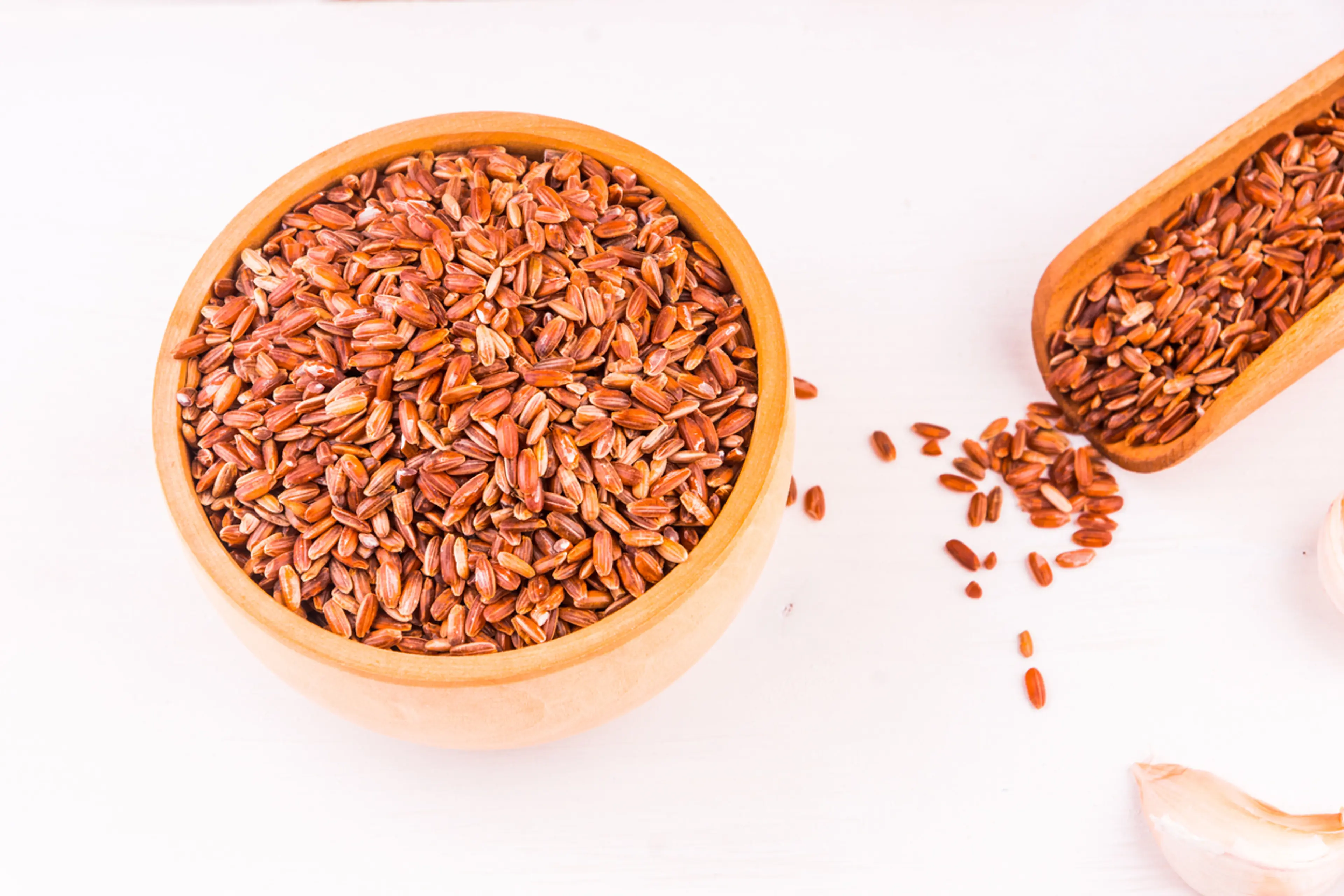
Red Rice
Red Rice is a staple of Bhutanese cuisine, grown in the Eastern part of the country. It's a medium-grain rice, similar to brown rice in texture, with a slightly nutty taste.

Momos
Momos are South Asian dumplings native to Tibet, Nepal, Bhutan, and the Indian region of Sikkim. They are usually filled with meat or cheese and served with a spicy sauce.
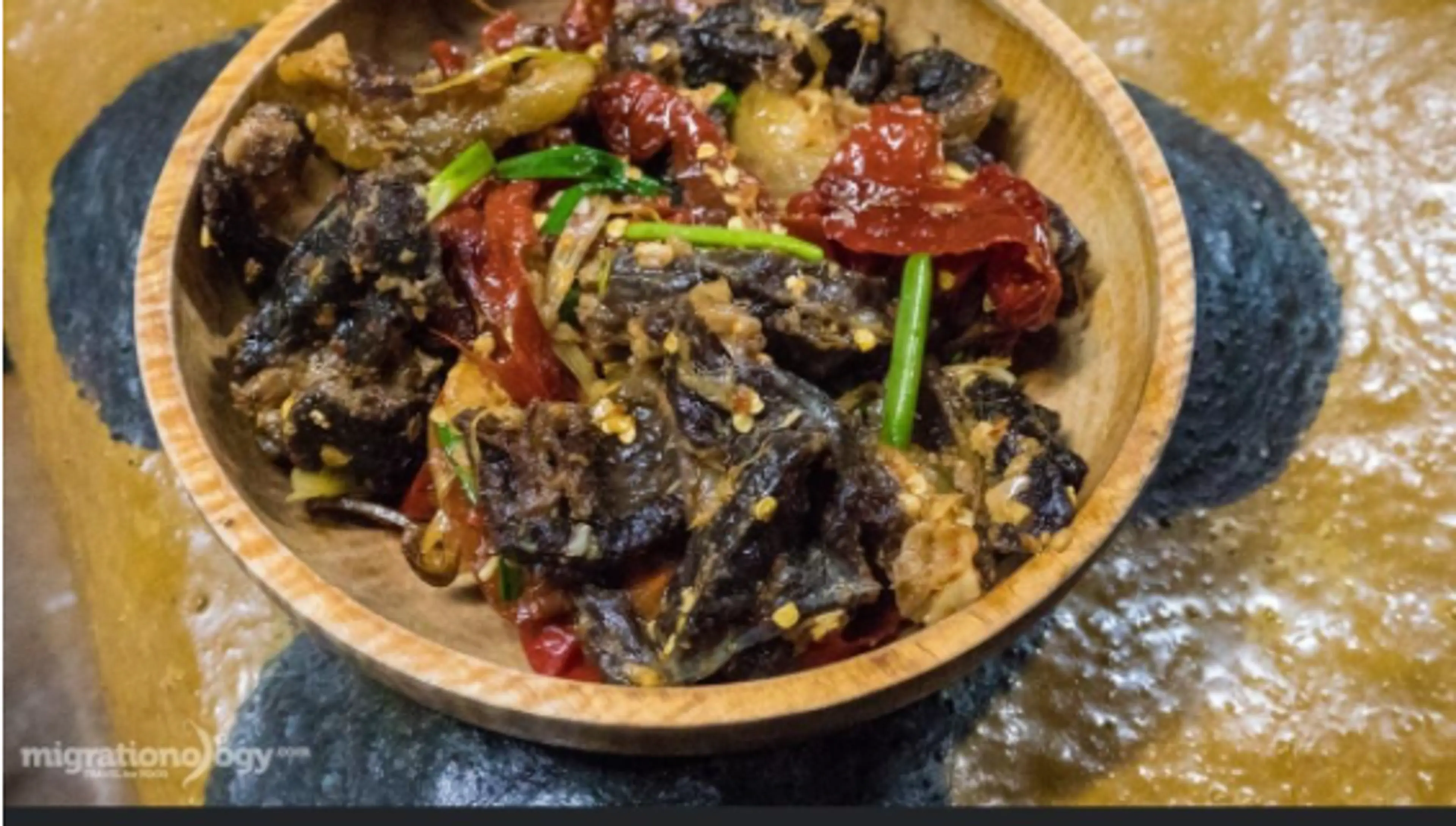
Shakam Paa
Shakam Paa is a dried beef dish cooked with chillies and radishes. It's a popular dish in Bhutan and is often served with red rice.

Suja
Suja is a Bhutanese butter tea. It's made from tea leaves, water, salt, and yak butter. It's a common drink in Bhutan, especially during the cold winter months.

Ara
Ara is a traditional alcoholic beverage in Bhutan. It's made from fermented rice, maize, millet, or wheat, and is often served warm.

Jaju Soup
Jaju soup is a traditional Bhutanese soup made with vegetables and cheese. It's a common part of meals in Bhutan.

Kewa Datshi
Kewa Datshi is a popular Bhutanese dish made from potatoes, cheese, and chillies. It's similar to Ema Datshi, but with potatoes instead of chillies.

Zow Shungo
Zow Shungo is a Bhutanese dish made from leftover vegetables and red rice. It's a common dish in Bhutan, especially among the rural population.

Khur-le
Khur-le is a traditional Bhutanese breakfast food. It's a type of pancake made from buckwheat, and is often served with Ema Datshi.
Best time to visit
The best time to visit Bhutan as a tourist is during the spring months of March to May when the valleys come alive with flowers in bloom. The autumn months from September to November are also ideal as the weather is clear and sunny with some of the most popular festivals taking place during this time. These seasons offer the most vibrant experiences and the most comfortable weather for exploring Bhutan's stunning landscapes and rich culture.
How to get around
Flight
Bhutan's only international airport is in Paro. Druk Air and Bhutan Airlines are the only airlines that operate flights in and out of Bhutan. Flights are available from India, Bangladesh, Nepal, and Thailand.
Private Car
Private cars are the most common way for tourists to get around Bhutan. You can hire a car with a driver who also often acts as a guide. This is usually arranged by your tour operator.
Taxi
Taxis are available in major towns like Thimphu and Paro. They do not have meters, so you will need to negotiate the fare before your journey.
Bus
Bhutan has a network of public buses that connect major towns. However, these buses can be crowded and are not always reliable.
Ridesharing
Ridesharing services are not common in Bhutan. Most people prefer to use taxis or hire private cars.
Bicycle
Bhutan is a great place for cycling with its beautiful landscapes. You can rent a bicycle in towns like Thimphu and Paro.
Trekking
Trekking is a popular activity in Bhutan. There are numerous trekking routes that allow you to explore the country's stunning natural beauty.
Horseback
In some remote areas of Bhutan, you can travel by horseback. This is a unique way to see the country's rural landscapes and is often included in trekking tours.
Important information
Currency BTN
Time zoneUTC+6
Driving sideLeft
Emergency phoneAmbulance: 110; Fire: 112; Police: 113
Drinking waterOpt for bottled water
Power sockets
Voltage230 V
Things to know about Bhutan as a first time visitor
1
Bhutan is the only country in the world that is carbon negative, which means it absorbs more CO2 than it produces.
2
Bhutan's currency is the Ngultrum (BTN). The Indian Rupee is also accepted in most places.
3
Bhutan is a Buddhist country and the locals are very respectful of their traditions. As a visitor, you should also respect their customs.
4
Dress modestly, especially when visiting religious sites. Shoulders and knees should be covered.
5
Bhutanese people speak Dzongkha, but English is widely spoken and understood.
6
Bhutan has a strict 'High Value, Low Impact' tourism policy. This means you must book your trip through a Bhutanese tour operator or one of their international partners.
7
The Bhutanese government has implemented a mandatory daily tariff for tourists. This covers accommodation, food, transport and an official guide.
8
Bhutan is not a budget destination. The minimum daily package for tourists is $200 during low season and $250 during high season.
9
Tipping is not a common practice in Bhutan, but it is appreciated.
10
The food in Bhutan is spicy. The national dish, Ema Datshi, is a spicy mix of chilies and local cheese.
11
Bhutan is a safe country to visit with a low crime rate. However, it's always important to take standard travel precautions.
12
The country has a strict no smoking policy. Selling and buying of tobacco is banned.
13
Bhutan uses the type D, F, and G plug. The standard voltage is 230 V, and the standard frequency is 50 Hz.
14
The weather in Bhutan varies greatly depending on the season. The summer months (June - August) can be quite hot with temperatures reaching up to 86°F (30°C), while winter months (December - February) can be very cold with temperatures dropping to 23°F (-5°C).
15
Bhutan is in the Bhutan Time zone, which is 6 hours ahead of GMT.
16
Internet access is available in most parts of Bhutan, but the speed may not be as fast as you're used to.
17
Bhutan has a rich culture and you'll often see festivals (Tshechus) taking place. However, it's important to behave respectfully during these events.
18
Bhutan has a lot of stray dogs. They are generally harmless, but it's best to avoid them.
19
Bhutan is a mountainous country, so be prepared for lots of hiking and climbing. Make sure to bring appropriate footwear.
20
Altitude sickness can be a problem for some visitors. It's recommended to acclimatize yourself to the high altitude before undertaking any strenuous activities.
Basic Dzongkha to know as a first time visitor
English phrase | Native phrase | Pronunciation | When to use it |
|---|---|---|---|
Hello | Kuzuzangpo | Koo-zoo-zang-po | Greeting |
Goodbye | Legshembe | Leg-shem-be | Leaving |
Thank you | Kadrin chhe | Ka-drin chhe | Expressing gratitude |
Yes | Inga | In-ga | Affirmative response |
No | Men | Men | Negative response |
Please | Gachui | Ga-chui | Making a request |
Sorry | Thuji che | Thu-ji che | Apologizing |
I don't understand | Nga mi sonam | Nga mi so-nam | When you don't understand something |
Where is the toilet? | Chhabsang ga chi mo? | Chhab-sang ga chi mo | Asking for directions |
Help | Thu encho gi | Thu en-cho gi | In emergencies |
Food | Zow | Zow | When you're hungry |
Water | Chhu | Chhu | When you're thirsty |
Good | Legshom | Leg-shom | Complimenting |
Beautiful | Zangpo | Zang-po | Complimenting |
How much? | Ga dem chi mo? | Ga dem chi mo | Asking for price |
I am lost | Nga thar song | Nga thar song | When you're lost |
Where is...? | ...ga chi mo? | ...ga chi mo | Asking for directions |
What is your name? | Chhoe gi ming ga chi mo? | Chhoe gi ming ga chi mo | Starting a conversation |
My name is... | Nga gi ming ... in | Nga gi ming ... in | Introducing yourself |
I need a doctor | Nga la menpa ngado | Nga la men-pa nga-do | In case of health issues |
Packing List
Clothing
Warm clothing (thermal layers, sweaters, jackets)
Comfortable walking shoes
Socks and underwear
Rainproof jacket
Hat, gloves and scarf
Sleepwear
Sunglasses
Toiletries
Travel-sized shampoo, conditioner, body wash
Toothbrush and toothpaste
Deodorant
Razor and shaving cream
Sunscreen
Lip balm
Hand sanitizer
First aid kit (band-aids, antiseptic wipes, tweezers)
Prescription medications
Travel-sized tissue packs
Travel documents and essentials
Passport
Visa documents
Travel insurance documents
Flight tickets
Hotel booking confirmations
Emergency contact information
Local currency (Bhutanese Ngultrum)
Credit and debit cards
Electronics and gadgets
Smartphone
Chargers for all devices
Universal travel adapter
Camera and memory cards
Portable power bank
Headphones
Miscellaneous items
Travel pillow and eye mask
Snacks
Reusable water bottle
Books or e-books for leisure reading
Travel guide and map
Notebook and pen
Umbrella
Torch or flashlight
Binoculars for sightseeing
Weather Conditions
Bhutan, the Land of the Thunder Dragon, experiences a wide range of weather conditions due to its diverse topography. The country is known for its dramatic landscapes, from subtropical plains to steep mountains and valleys. The best time to visit Bhutan is during the spring months of March to May when the weather is generally clear and dry, and the highlands are awash with blooming wildflowers. The average temperature during this time ranges from 50°F to 70°F (10°C to 21°C). This is also the time when the famous Paro Tshechu festival takes place, offering a great cultural experience. The monsoon season, from June to September, brings heavy rainfall, especially in the southern region. While the landscapes are lush and green, the downpours can make trekking and sightseeing difficult. The temperatures during this season range from 60°F to 80°F (15°C to 27°C). Autumn, from October to November, is another ideal time to visit Bhutan. The weather is mild and the skies are clear, providing excellent conditions for trekking and for viewing the Himalayan peaks. The temperatures during this season range from 50°F to 70°F (10°C to 21°C). Winter, from December to February, can be quite cold, especially in the mountains where temperatures can drop below freezing. However, the lower areas remain pleasant with temperatures ranging from 45°F to 60°F (7°C to 15°C). This is a great time to visit for bird watching as many migratory birds visit Bhutan during this period. Regardless of when you visit, it's advisable to pack layers as temperatures can vary greatly between day and night. Also, carry rain gear if you're visiting during the monsoon season. Always check the local weather forecast before planning your day's activities, especially if they involve trekking or other outdoor adventures.
| Month | Hi / Lo (°C) | Weather Overview |
|---|---|---|
January | 10° / -5° | January is the coldest month in Bhutan, with temperatures often dropping below freezing. It's a great time for tourists who enjoy winter sports and serene, snowy landscapes. |
February | 12° / -2° | In February, the weather begins to warm up slightly, but it's still quite chilly. This month is perfect for those who want to avoid crowds and enjoy peaceful sightseeing. |
March | 15° / 2° | March sees the start of spring in Bhutan, with temperatures rising and flowers beginning to bloom. It's an ideal time for hiking and exploring the natural beauty of the country. |
April | 20° / 7° | April is a pleasant month with moderate temperatures, making it perfect for outdoor activities. The valleys are lush and the mountains are covered in rhododendrons. |
May | 22° / 10° | May is warm and the countryside is vibrant with greenery. It's a great time for bird watching and trekking, but be prepared for occasional showers. |
June | 25° / 15° | June marks the beginning of the monsoon season in Bhutan. While there might be some rain, the landscapes are incredibly lush and vibrant. |
July | 25° / 15° | July is in the middle of the monsoon season, so expect heavy rains. However, the rain brings out the beauty of the flora and fauna, making it a unique time to visit. |
August | 25° / 15° | August continues to be rainy, but the temperatures are warm. It's a good time to visit if you don't mind the rain and enjoy lush, green landscapes. |
September | 22° / 10° | September sees the end of the monsoon season. The weather is pleasant and the landscapes are still lush, making it a great time for trekking and sightseeing. |
October | 20° / 7° | October is one of the best months to visit Bhutan. The weather is cool and dry, and it's a great time to witness the vibrant festivals of the country. |
November | 15° / 2° | November is cool and dry, with clear skies offering great views of the mountains. It's a good time for trekking and exploring the cultural sites of Bhutan. |
December | 12° / -2° | December is a chilly month, but it's also a festive time in Bhutan. It's a great time to experience the local culture and traditions, but pack warm clothes. |
Did you know?
Places near by Bhutan
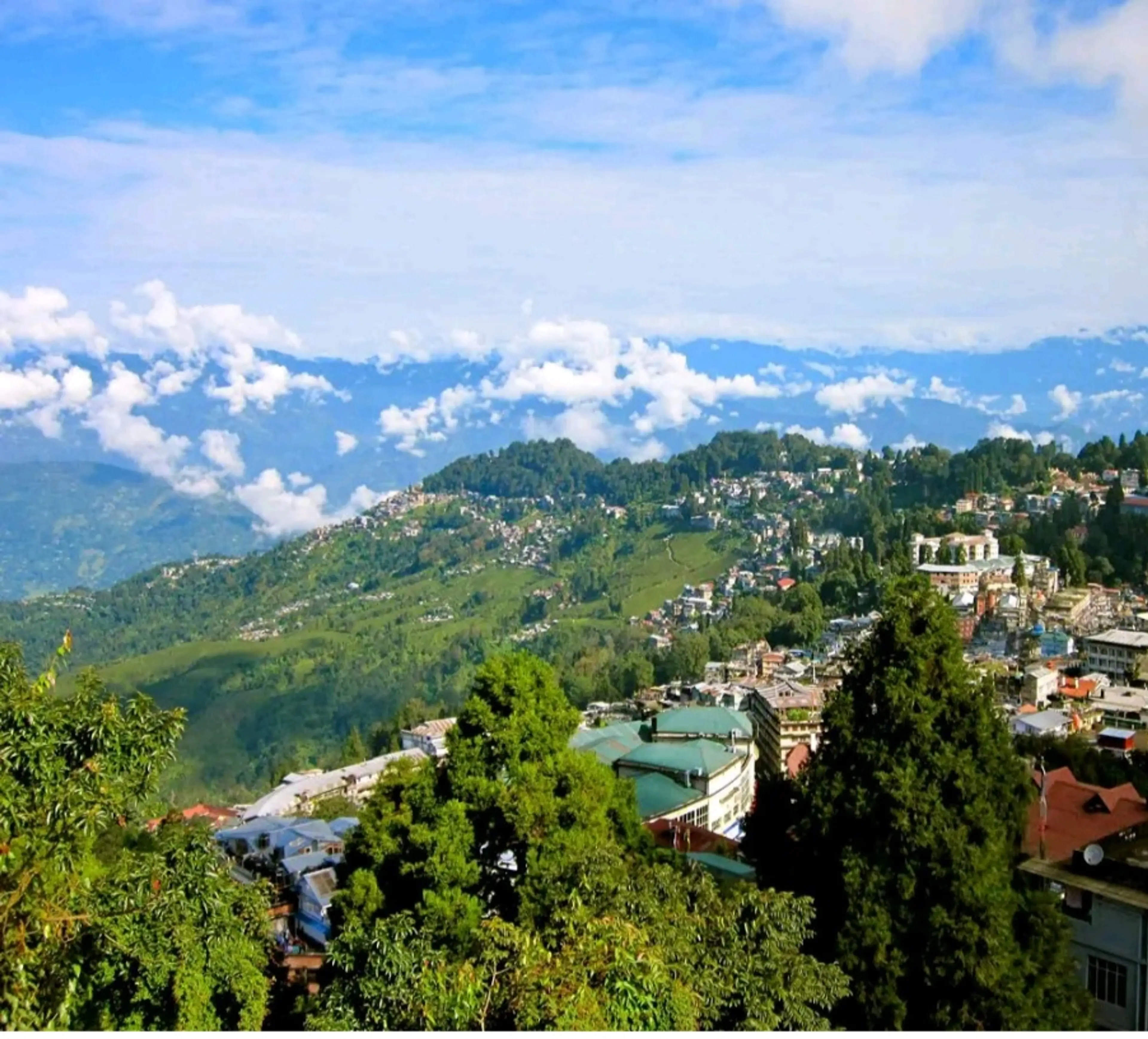
Darjeeling
Famous for its tea gardens and the view of the Kanchenjunga peak.
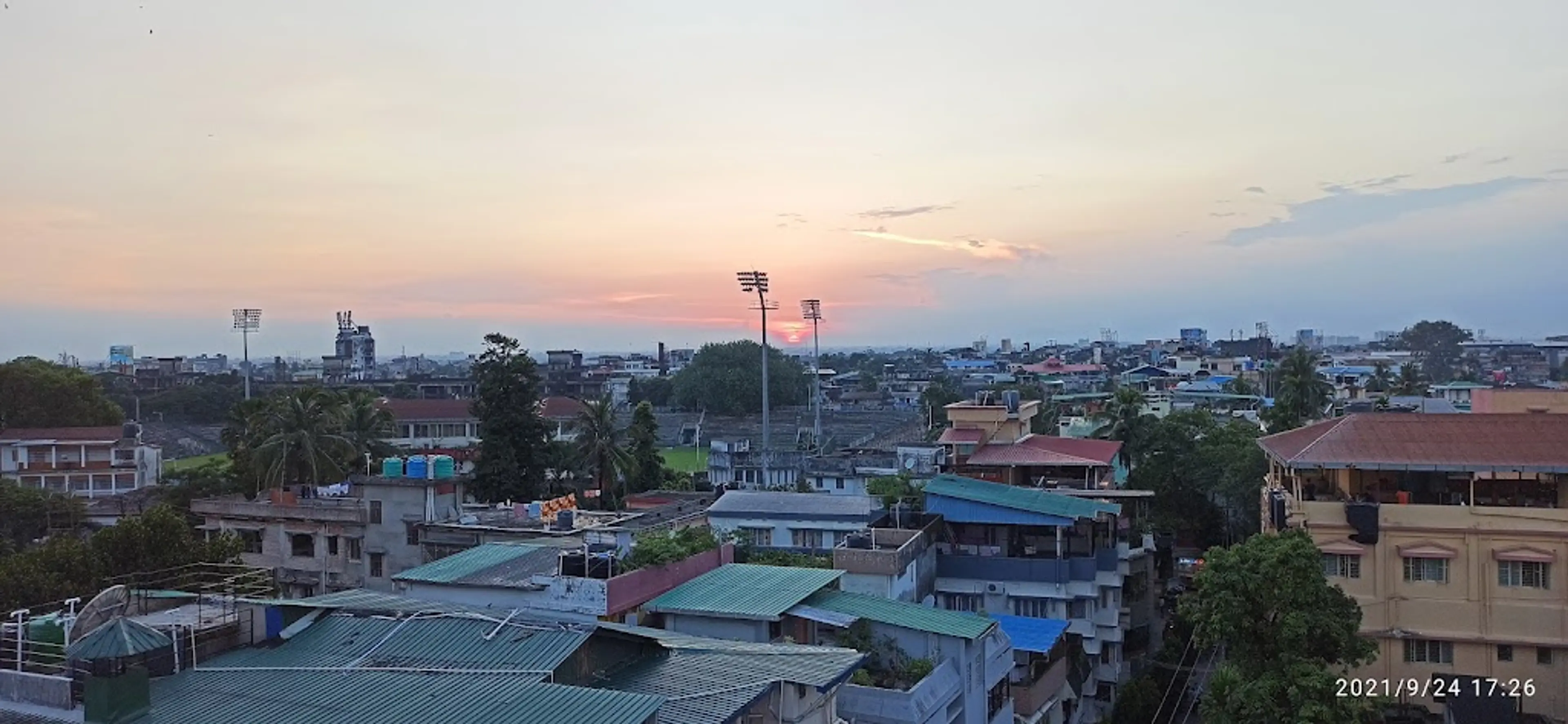
Siliguri
Known for its tea gardens and the Mahananda Wildlife Sanctuary.
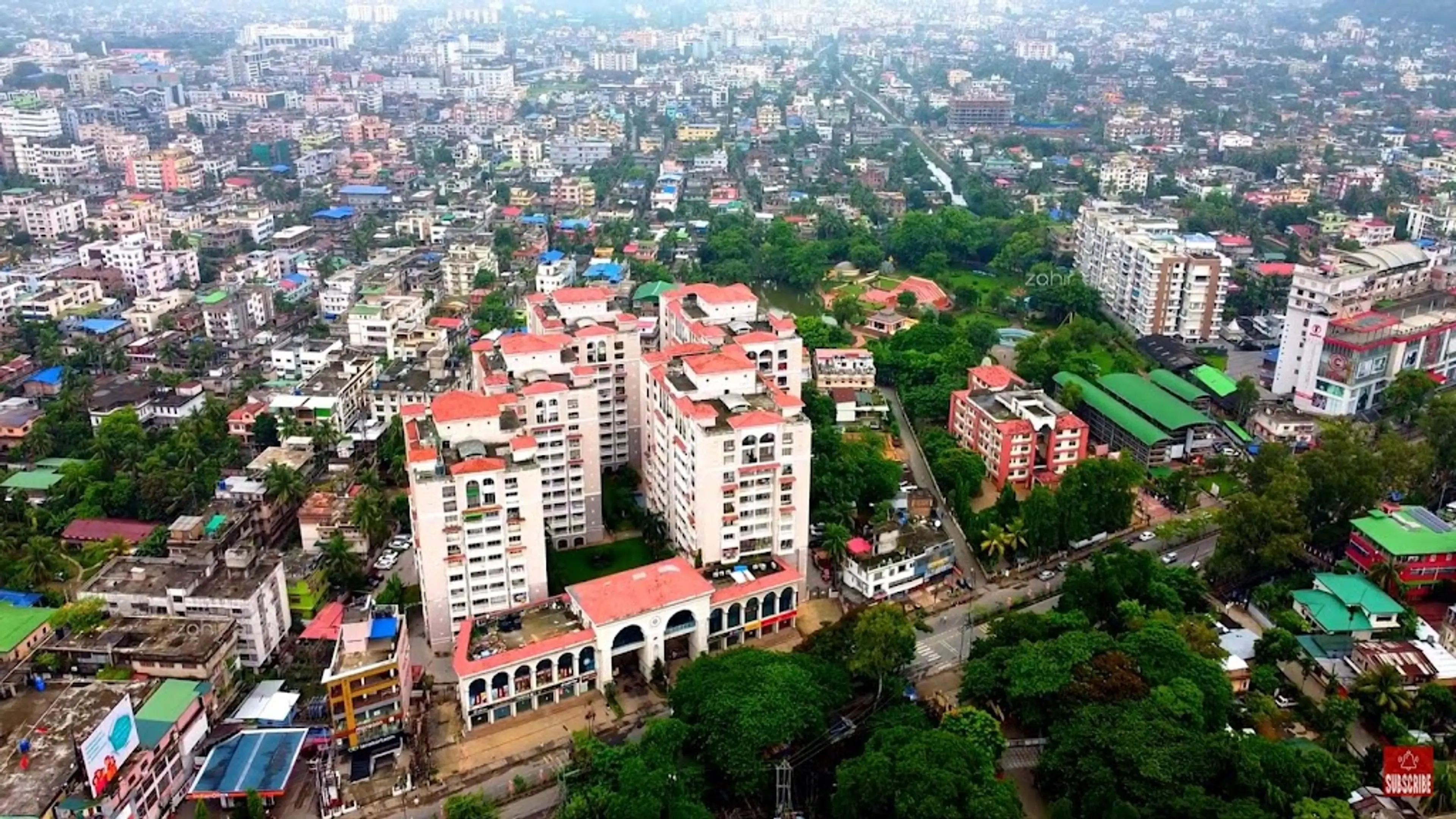
Guwahati
Known for the Kamakhya Temple and the Brahmaputra river.

Kathmandu
The capital city of Nepal known for its rich history and culture.

Kolkata
Cultural capital of India, known for its colonial architecture.

Cherrapunji
Known for its living root bridges and heavy rainfall.
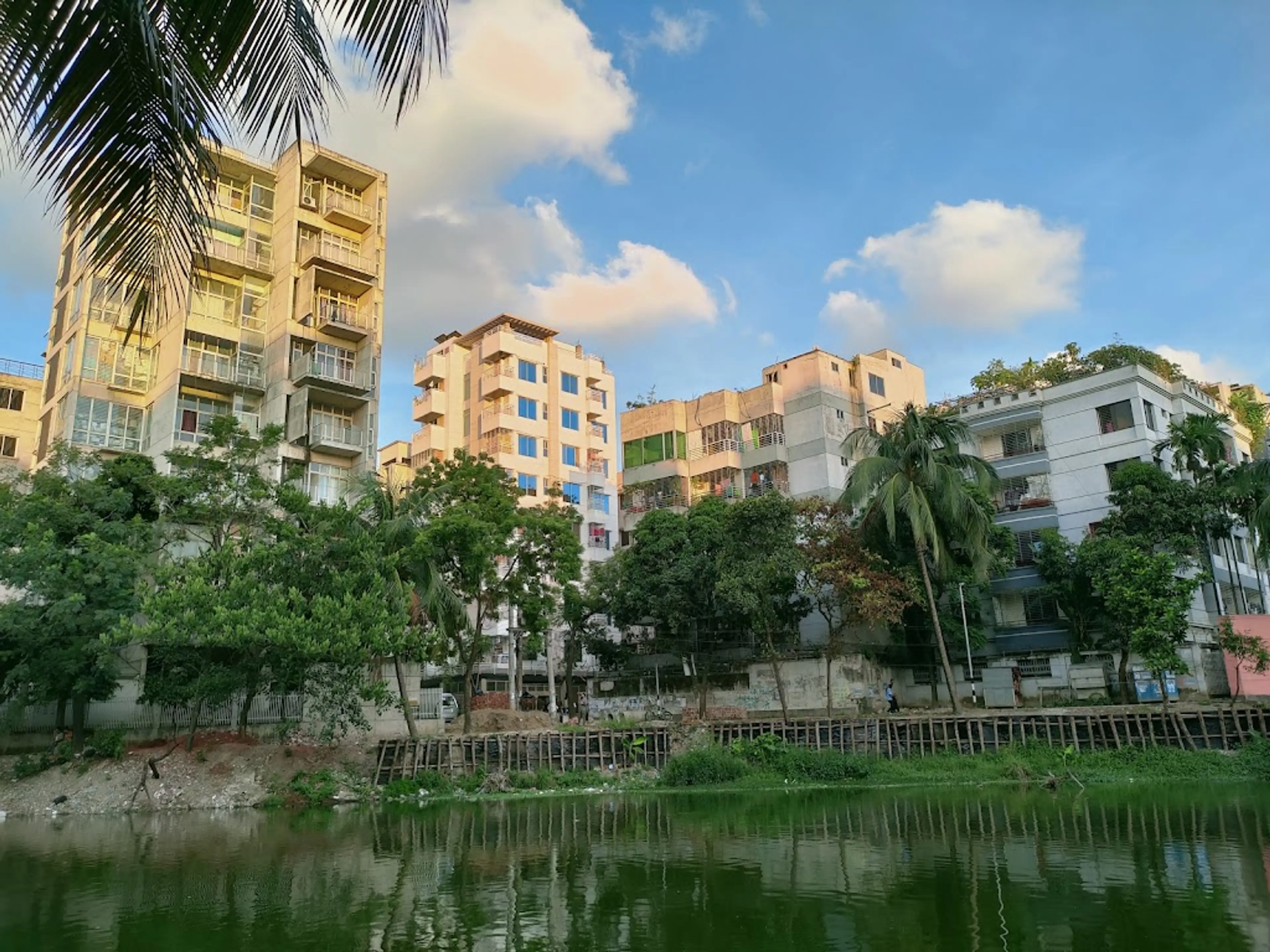
Dhaka
The capital city of Bangladesh known for its vibrant street life.
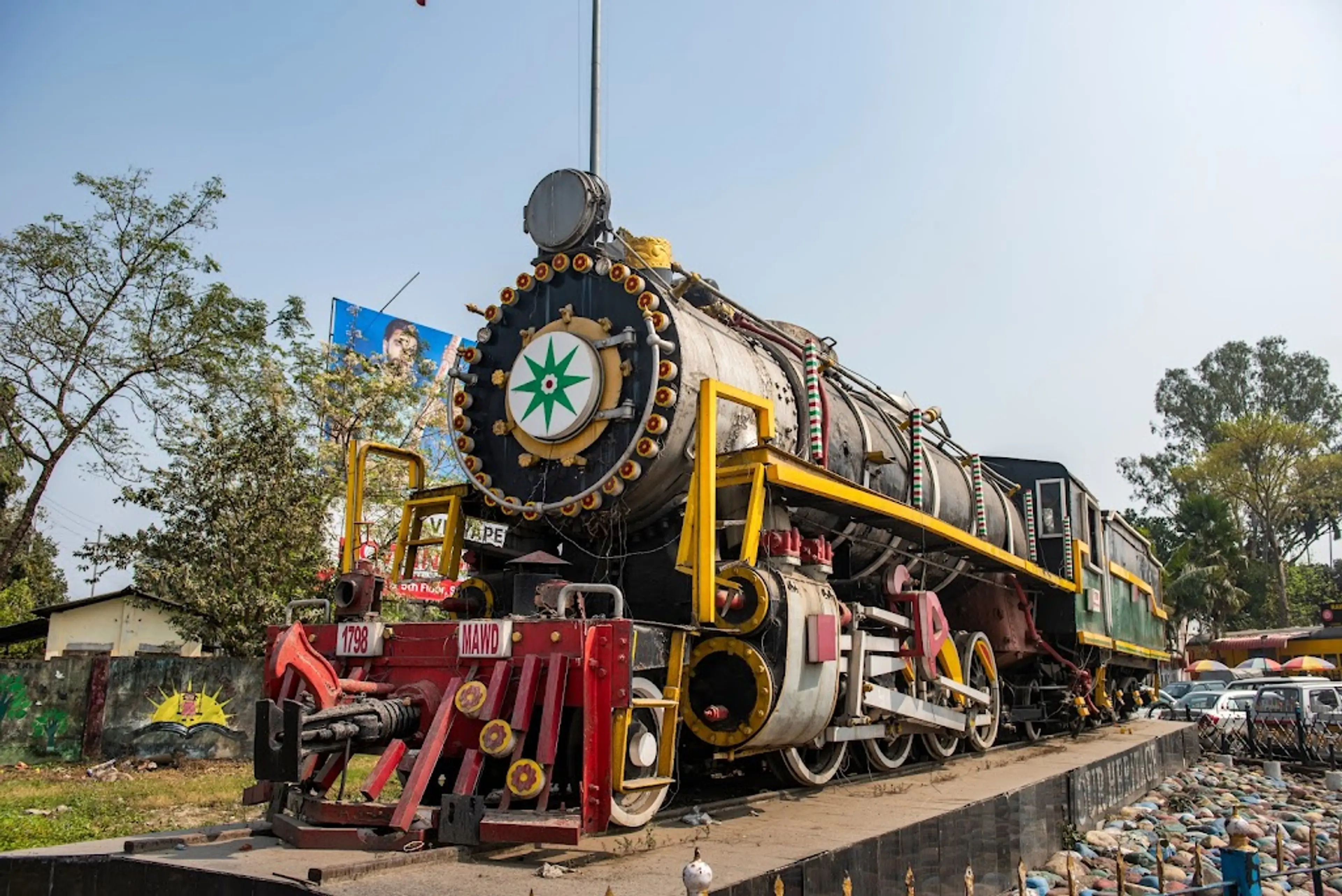
New Jalpaiguri
Gateway to the Northeast India, known for its tea gardens.


